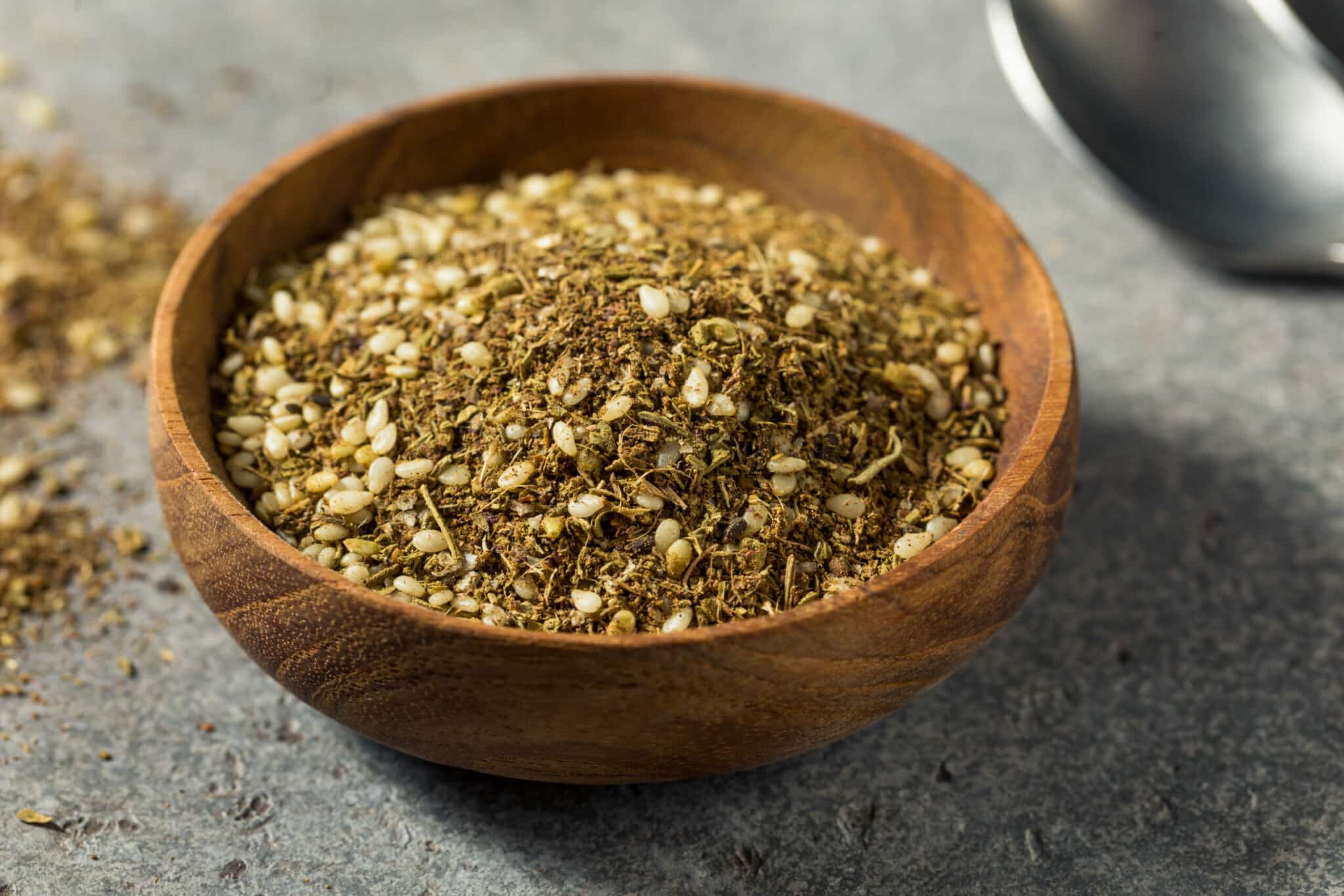Za’atar is a spice blend that enhances the flavor of many dishes, from roasted chicken to hummus. It is earthy, tangy, and herby.
So what happens when you reach or it and find an empty jar? Not to worry. You can still get za’atar’s signature Middle Eastern flavor with a few smart changes to what you already have in your pantry. Here are seven simple replacements for za’atar and how to use them without losing the magic.
1. Homemade Za’atar
Combine equal amounts of dried thyme, sesame seeds, and sumac. If you have it, add a little bit of oregano or marjoram and a pinch of salt. Use in the same amount as premade za’atar.
Why it works. This is the closest you can get to the real thing without going to the market. It’s as real as it gets.
2. Lemon zest, thyme, and sesame seeds
One tablespoon of za’atar is equal to one teaspoon of dried thyme, half-teaspoon of toasted sesame seeds, and a quarter-teaspoon of lemon zest. To get a deeper, nuttier flavor, toast the sesame seeds first. If your recipe calls for it, add a little salt.
Why it works. The thyme provides a herby base, the sesame adds texture and flavor, and the lemon zest takes the place of the sumac’s tang.
3. Sumac and Italian seasoning
A tablespoon of za’atar equals a tablespoon of Italian seasoning plus a half-teaspoon of sumac.
Use an Italian blend that has a lot of oregano and thyme in it. If you don’t have sumac, add a squeeze of lemon juice to your dish before serving.
Why it works. Italian seasoning mimics the herbs in za’atar, and sumac or lemon brings back the bright flavor that makes za’atar so special.
4. Dukkah
- PREMIUM EGYPTIAN SPICE BLEND WITH REAL HAZELNUTS, sesame seeds and spices
- A NUTRITIOUS WAY TO SEASON dips, roasted vegetables, meats, and stews
- OR BEST SIMPLY SERVED THE TRADITIONAL WAY with hard boiled eggs, olive oil,…
- Egyptian Dukkah is a specialty blend of roasted hazelnuts seasoned with…
- Dukkah nut blend is warm & aromatic, traditionally served in olive oil for…
- Use Dukkah in a marinade or rub with olive oil & a bit of salt, then serve…
You can also substitute the Egyptian spice dukkah for za’atar in the same measurement. Dukkah can be rougher than za’atar, so crush it a little before putting it on bread or meat.
Why it works. This mix of nuts and seeds has a flavor that is similar to zaatar’s earthy, toastiness. Dukkah makes a great topping or crust.
5. Sesame seeds, lemon juice, and Herbes de Provence
One tablespoon of za’atar equals one tablespoon of herbes de Provence plus a half-teaspoon of sesame seeds and a few drops of lemon juice. Wait until after cooking to add the lemon.
Why it works. Herbes de Provence adds a similar herbal depth, and sesame and lemon balance it out with their nutty and bright flavors.
6. Thyme, oregano, and sumac
One tablespoon of za’atar equals one teaspoon of oregano combined with one teaspoon of thyme and a half-teaspoon of sumac. Mix this up and store it in a jar so you can use it again.
Why it works. This trio combines the main herbal notes of most za’atar blends.
7. Cumin, thyme, and lemon zest
One tablespoon of za’atar equals a half-teaspoon of ground cumin plus one teaspoon of thyme, and a quarter-teaspoon of lemon zest. Cumin is stronger than the other spices, so go light on the measurement and then add more to taste. This combination is best for meat, grains, or roasted vegetables.
Why it works. Cumin gives the mix a rich, earthy flavor that makes up for the lack of sesame, and thyme and lemon zest keep it fragrant and lively.
Zaatar substitution FAQs
Is it zaatar or za’atar?
The correct spelling is za’atar.
What are the ingredients in za’atar.
Dried thyme, oregano or marjoram, sumac, and toasted sesame seeds are common ingredients in traditional za’atar blends. Some regional differences also add salt or other herbs.
What does za’atar taste like?
Za’atar has a taste that is earthy, tangy, nutty, and herbal all at once. The sumac adds a citrusy kick, and the sesame seeds add a warm nuttiness.
Is za’atar healthy?
Za’atar has some health advantages. Herbs and sumac provide antioxidants, and sesame seeds add healthy fats.
What kinds of foods use za’atar?
Za’atar is a key ingredient in Middle Eastern dishes like man’oushe (za’atar flatbread), labneh with olive oil and herbs, and roasted chicken or lamb. It also tastes great on popcorn, salads, and roasted potatoes.
Last update on 2025-11-09 / Affiliate links / Images from Amazon Product Advertising API


